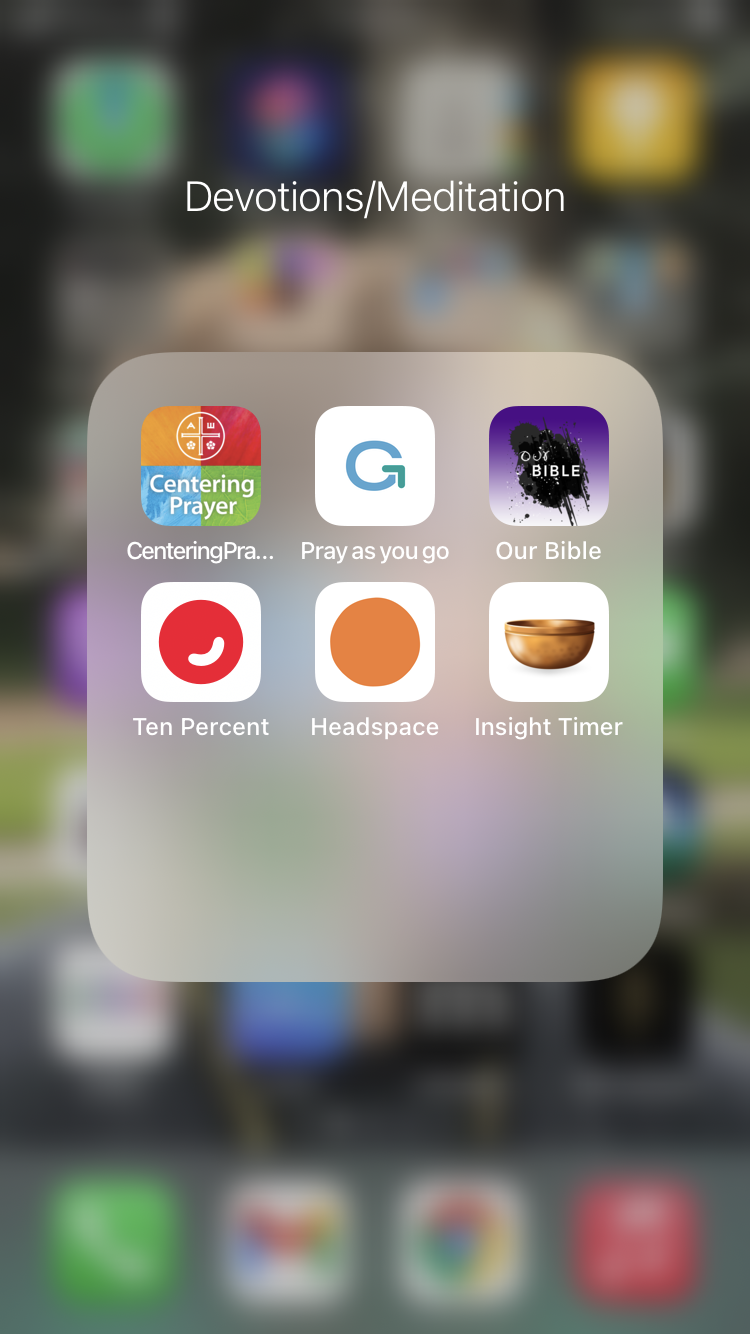Many of us have intentions to set aside time daily for devotions, prayer, or meditation. We know that these practices help us feel more whole, more grounded, and more aware of the presence of the divine within us. We know that this time is important for our inner and outer lives. Or, we know we really should slow down for five minutes before we spin off in a thousand different directions. And yet…it can be hard to know where to begin. It can be hard to be self directed when it comes to matters of the spirit. Today I want to share with you how I use my phone to enrich my spiritual life and support my mental health through apps. Now I know many of us have mixed relationships with technology and our phones, but I have found certain apps have helped me be consistent in my meditation practice as well as being sources of nurture for my faith. There are a lot of good resources out there, but here are 3 Christian faith apps that I use and appreciate, and 3 meditation apps I find helpful. Please note most have in-app purchases to access the most content, so be aware of what you are signing up for. May your phone serve you well as you seek to be still, be real, and be present. Peace, Ruth
Faith Based Apps
Centering Prayer (free)
The Centering Prayer app comes from Contemplative Outreach. It really has everything to guide you through a centering prayer practice from choices for the opening prayer, a time and an adjustable timeframe for centering prayer, choices for a closing prayer and closing thought, as well as choice of bell sounds. It is a lovely guide and includes links to their website for more teaching and resources.
Pray as you go (free)
This is a daily session offering lasting between 10-15 minutes with a beautiful photo background, music, scripture, and reflection questions. If you desire something that feels like a mini chapel service accessible wherever you are, this app is for you. This is produced by Jesuit Media Initiatives and it is absolutely lovely. It’s simply a beautiful tool for morning reflections. It also includes retreats and series--for example, an examen series, an Advent series, and a walking with God series.
Our Bible (in app purchases)
Our Bible includes various versions of the Bible, devotions and devotional series, podcasts, Bible study, articles, and community groups all in one place. Topics range from grief, doubt, compassion and hospitality, addiction and recovery, and deconstruction and reconstruction. What I love about Our Bible is their inclusion of material specifically for LGBTQ, disability, and neurodiverse readers. There is also content in Spanish.
Meditation Apps
Ten Percent Happier (in app purchases)
Ten Percent Happier comes from the work of Dan Harris and his book 10% Happier. I loved Harris’ book. As someone who has had panic attacks off and on for, ummm... forever, following his exploration of neuroscience and spirituality as he sought out how to tame the voices in his head was a great trip. The app is even better. Really gifted teachers both lead meditations but also teach about issues like anxiety, focus, and all about meditation. I’ve learned a lot in the conversations Dan Harris has with such teachers as Sharon Salzberg and Joseph Goldstein. There are single meditations, courses, sleep sessions, and podcasts.
Insight Timer (in app purchases)
I use Insight Timer every single day for music and sleep meditations (according to Insight Timer I have logged 1,245 consecutive days which sounds about right). There is a wealth of music options, with new music always being added, but also guided meditations, courses, workshops, yoga classes, live events, and content geared for children. Many faith traditions are represented and the sheer quantity of topics available makes this app, in my opinion, a solid choice for anyone.
Headspace (in app purchases)
Headspace is newer to me, and while it shares a lot in common with Insight Timer in terms of meditation teaching and content, there are important differences based on your style. What Headspace offers that is unique is a movement section with yoga, dance breaks, quick workouts, and cardio. You are also greeted by suggested morning, afternoon, and night sessions/options. It has a more secular feel and a bright, happy color interface which would appeal to those approaching mediation from a mental health focus more than a spiritual focus.


